Recognizing Early Head Lice Signs
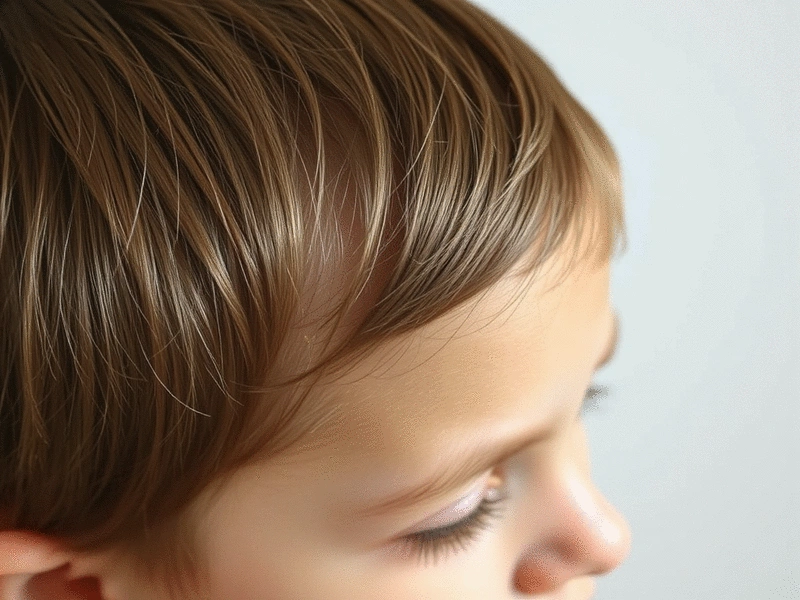
Every parent's worst nightmare often starts with a simple tickle. Understanding the early signs of head lice can help you act swiftly and effectively to protect your family. Let's explore the crucial steps to take when detecting a lice infestation!
What You Will Learn
- Head lice are not exclusive to unclean environments; they can affect anyone through close contact.
- Early detection is key; symptoms like tickling sensations often precede visible signs of infestation.
- Regular inspections, especially after group activities, can prevent lice from spreading.
- Identifying nits is crucial—they are tiny, oval-shaped eggs attached to hair, often confused with dandruff.
- Taking immediate action upon discovering lice can save time and reduce stress in managing an outbreak.
Understanding the Head Lice Infestation Process and Early Detection
The following visual outlines the key stages of head lice infestation, from early signs to action steps, emphasizing the critical role of early detection.
Infestation & Lifecycle: The Basics
Head lice thrive through close contact, often in schools or daycare. Adult lice lay up to 10 eggs/day. Lice crawl, so sharing items increases risk.
- Eggs (Nits)
- Nymphs
- Adult Lice
Benefits of Early Detection
Crucial for effective treatment and prevention. Reduces spread and simplifies management. Waiting for itching can worsen infestation.
- Prevents widespread outbreaks
- Easier, shorter treatment
- Reduces stress
Subtle Early Signs (Pre-Itching)
Tickling sensation from lice movement. Scalp bumps or red spots from bites. Often mistaken for other skin conditions.
- Tickling or movement feeling
- Small red spots on scalp
- Irritation without intense itch
Spotting Nits & Taking Action
Nits are small, oval, firmly attached to hair shafts. Check behind ears/nape. Act quickly if found.
- Inspect with fine-toothed comb
- Choose effective treatment
- Inform school/parents to prevent spread
Understanding the Initial Signs of Head Lice Infestation
Head lice can be a source of anxiety for many parents, and understanding these tiny creatures is the first step in tackling them. Head lice are small, wingless insects that live on the scalp and feed on human blood. Their lifecycle consists of three stages: eggs (nits), nymphs, and adults. Infestations occur when these pests are transferred from one person to another, often through direct head-to-head contact. It's common in settings where children are in close proximity, like schools or daycare centers.
As a parent, it's essential to be aware of how lice infestations can happen. They thrive in warm environments, making the human scalp an ideal habitat. This understanding can help you stay vigilant and act quickly if an infestation occurs.
What Are Head Lice and How Do They Infest?
Head lice are not a sign of poor hygiene; they can affect anyone. Their presence is primarily due to close contact with someone who is infested. As the CDC explains, adult lice can lay up to 10 eggs a day, which is why quick identification is key in stopping an outbreak. Lice do not jump or fly; they crawl from one head to another, so sharing hats, hairbrushes, or even bedding can increase the risk of infestation.
The Importance of Early Detection of Lice Infestation
Recognizing the early signs of lice is crucial for effective treatment and prevention. Early detection can significantly reduce the spread within households and schools. The sooner you act, the easier it is to manage! Many parents mistakenly wait for itching to appear, which, as noted by HealthyChildren.org, can take weeks. By that time, the infestation may have spread, leading to a more extensive treatment process.
- Check regularly, especially after sleepovers or playdates.
- Be aware of subtle symptoms before itching starts.
- Educate your children about the importance of not sharing personal items.
Staying proactive can ease the stress associated with lice infestations and help keep your family lice-free. At Lice Nits, we provide resources to empower parents like you to tackle this issue effectively!
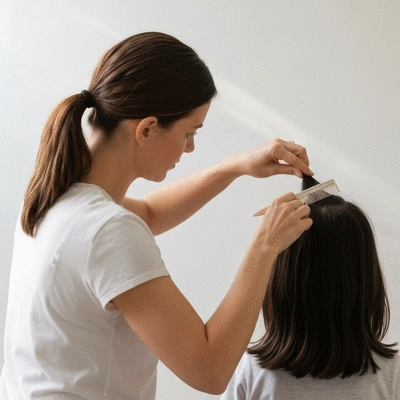
Subtle Sensations: Early Warning Signs Before Itching Begins
Identifying the Tickling or Movement Sensation in Hair
Before the infamous itching begins, many children experience a tickling sensation in their hair. This feeling often stems from lice moving around the scalp or laying eggs. It's important to note that this sensation can happen days before any visible symptoms appear. If your child describes a strange feeling in their hair, it might be time to investigate further!
As a parent, trust your instincts. If something feels off, it's always worth checking for lice. Early action can make a world of difference in managing an infestation effectively.
Recognizing Early Non-Itching Symptoms of Lice Infestation
Scalp Changes and Irritations
Aside from the tickling sensation, there are other subtle signs you should watch for. Scalp bumps and red spots may appear, indicating irritation caused by lice bites. These symptoms can sometimes be mistaken for other skin conditions, so staying alert is crucial. If you notice these changes, it's wise to conduct a thorough lice check.
The Role of Nits: How to Spot Lice Eggs Among Hair
Identifying lice eggs, or nits, is an essential part of early lice detection. Nits are small, oval-shaped, and usually yellow or white, attached firmly to the hair shafts, particularly close to the scalp. They can be confused with dandruff, but unlike dandruff, nits cannot be easily brushed off. Learning to spot them is vital for successful management.
- Check behind the ears and at the nape of the neck where nits are often found.
- Use a magnifying glass for better visibility of nits.
- Regularly inspect your child's hair, especially if there's been an outbreak at school.
By recognizing these early signs, you can act fast and effectively, ensuring that lice don’t become a bigger problem in your household.
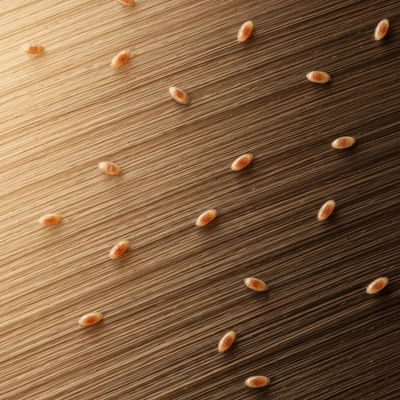
We Want to Hear From You!
Have you ever suspected your child might have head lice? What steps did you take to address the situation? Share your experiences and tips in the comments below!
Summarizing the Importance of Early Detection of Head Lice
When it comes to managing head lice, early detection can make all the difference! By recognizing the subtle signs of an infestation—like that tickling sensation or changes in your child's scalp—you can take proactive steps before the problem escalates. Early intervention not only simplifies treatment but also reduces the stress and stigma often associated with lice.
We’ve discussed various symptoms and methods for identifying lice, underscoring the importance of being vigilant. Remember, a quick response can save you and your family from larger headaches down the road. So, stay observant and don't hesitate to check for signs!
Taking Action: What to Do If You Suspect a Lice Infestation
Steps to Follow for Treatment and Prevention
If you suspect that head lice might be part of your family’s life, don’t panic! Here’s a practical approach to tackle the situation:
- Inspect: Conduct a thorough examination of your child’s hair and scalp using a fine-toothed lice comb.
- Act Quickly: If you find lice or nits, choose an effective treatment method, whether over-the-counter or natural remedies. For more information on treatment options, you can consult resources from the NYC Department of Health.
- Communicate: Inform your child's school and other parents to help reduce potential spread.
- Prevent: Implement preventative measures like regular checks and avoiding shared hair accessories.
Following these steps can help you manage the situation effectively and keep those pesky lice at bay. Have you ever had to take these actions? I'd love to hear how you managed it in the comments below!
Frequently Asked Questions About Head Lice
To further empower you with knowledge, here are some frequently asked questions about head lice, covering the main points discussed in this article:
- What are the earliest signs of head lice infestation? The earliest signs often include a tickling sensation in the hair, small red spots on the scalp from bites, or general irritation without intense itching. These sensations can occur before visible lice or intense itching begins.
- Are head lice a sign of poor hygiene? No, head lice are not indicative of poor hygiene. They can affect anyone, regardless of cleanliness, and are primarily spread through close head-to-head contact.
- How can I differentiate nits from dandruff or hair product residue? Nits (lice eggs) are typically oval-shaped, tiny, and firmly attached to the hair shaft, usually close to the scalp. Unlike dandruff or residue, nits cannot be easily brushed or flicked off the hair. A magnifying glass can help in spotting them.
- Why is early detection of head lice so important? Early detection is crucial because it allows for prompt treatment, which can significantly reduce the severity of the infestation, prevent its spread to others, and simplify the treatment process. Waiting for intense itching symptoms often means the infestation is more established.
- What should I do immediately if I suspect my child has head lice? If you suspect lice, immediately conduct a thorough inspection of your child's hair and scalp, especially behind the ears and at the nape of the neck, using a fine-toothed comb. If lice or nits are found, begin an effective treatment and inform relevant parties like schools or close contacts.
More Frequently Asked Questions About Head Lice Symptoms
Many parents have common questions regarding head lice that can sometimes lead to confusion. Here are a few inquiries I often encounter:
- Can you have lice without itching? Yes, it is possible to have lice and not experience itching right away due to the body's delayed allergic reaction.
- How can you differentiate nits from dandruff? Nits are typically oval and firmly attached to the hair shaft, while dandruff is more flaky and easily removed.
- How quickly can lice spread? Lice can spread rapidly through close contact, which is why early detection is crucial!
Having answers to these questions can empower you and give you peace of mind. If you have any other questions, feel free to ask or share your experiences!
Empowering Knowledge: Staying Vigilant Against Head Lice
At Lice Nits, we believe that knowledge is power! Staying informed about the signs, symptoms, and management of head lice can equip you to handle any potential infestation with confidence. I encourage you to keep learning and sharing information with fellow parents and caregivers. Together, we can create a supportive environment where everyone feels empowered to tackle lice challenges!
Recap of Key Points
Here is a quick recap of the important points discussed in the article:
- Head lice are common, especially among children, and infestations occur through direct contact.
- Early detection is crucial; look for tickling sensations, scalp irritations, and nits in the hair.
- Regular checks and education on sharing personal items can help prevent infestations.
- If you suspect lice, inspect thoroughly, act quickly with treatment, and communicate with others to prevent spread.
Popular Posts
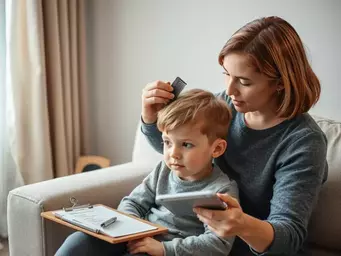 Have you ever felt the panic that arises when you discover head lice on your child's scalp? Understa
Have you ever felt the panic that arises when you discover head lice on your child's scalp? Understa
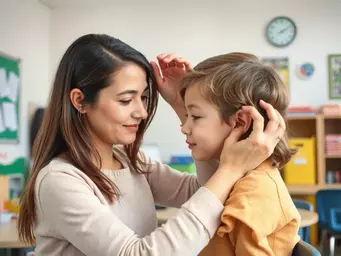 It's surprising how easily something as small as a head louse can disrupt an entire school community
It's surprising how easily something as small as a head louse can disrupt an entire school community
 What if the key to your child's comfort and well-being lies in understanding the aftercare process f
What if the key to your child's comfort and well-being lies in understanding the aftercare process f
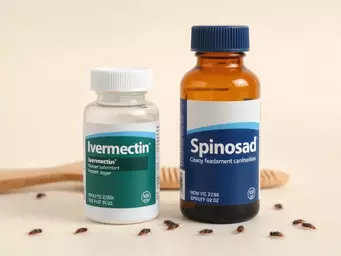 What if a single application could free your family from the stress of head lice? One-dose treatment
What if a single application could free your family from the stress of head lice? One-dose treatment
